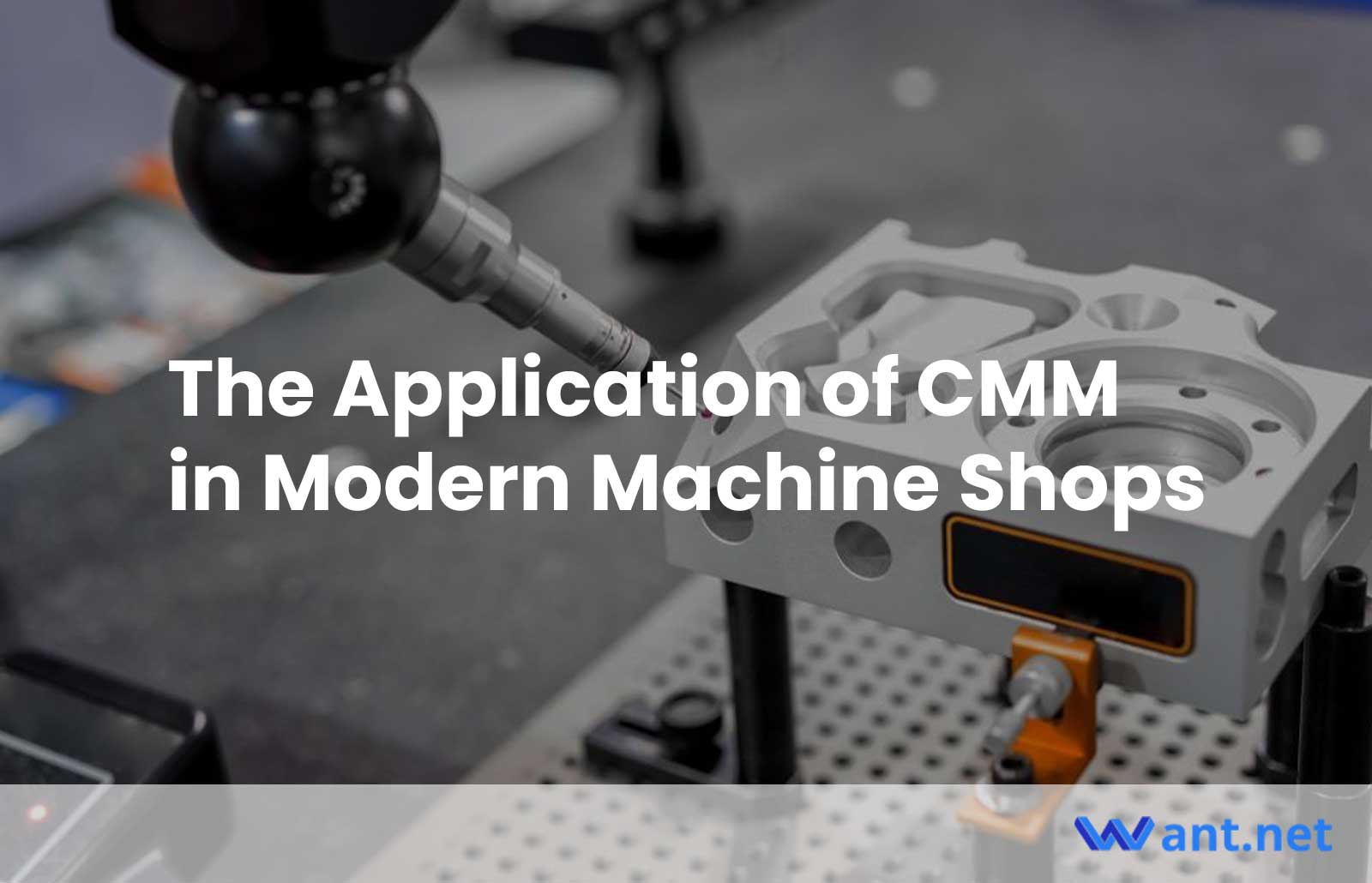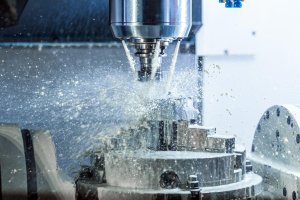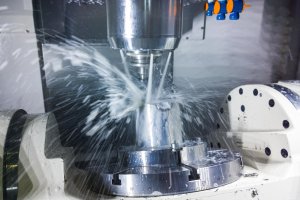Precision plays a crucial role in today’s CNC machining industry, with measurements reaching tenths of microns and continually increasing. As machine tools become more precise, accurately measuring the deviation of machined parts becomes increasingly challenging. To address this, new methods of control and metrology equipment are constantly being developed and enhanced. One such equipment that offers flexibility, speed, and precision in assessing part accuracy is the Coordinate Measuring Machine (CMM).
How Does a CMM Work?
A Coordinate Measuring Machine (CMM) utilizes an incredibly sensitive electronic probe to gather discrete points from the geometry of a machined part. This probing process helps determine the part’s conformity to specific requirements.
CMMs are frequently employed to evaluate individual parts or assemblies, ensuring adherence to the original design. They are integrated into quality testing and control workflows to analyze the dimensions of machined parts and prevent potential quality issues.
The working procedure of a CMM involves two main steps. First, it measures the manual geometry of an object and determines its dimensions by using a probe attached to the machine’s movable axis. Then, it verifies that the measured parts match the corrected design. The following steps outline its operation:
- The part to be analyzed is placed on the CMM’s base, which is made of a rigid and stable material. This stability ensures accurate measurements despite external forces that could affect the process. All components mounted above the CMM plate can move and are equipped with a touching probe.
- The CMM controls the gantry to move the probe along the three-dimensional axis, replicating every facet of the part for measurement.
- When the probe touches the part, it sends an electrical impulse that is captured by the computer. Repeating this step with multiple points allows the construction of the part’s structure.
- After the measurement, the data obtained, including the part’s X, Y, and Z coordinates, undergoes analysis to determine its features. This process remains consistent across different CMMs that use camera systems.
Components of a CMM
A Coordinate Measuring Machine comprises various parts. The components include:
- Probe: The probe is an essential part of a CMM as it makes physical contact with the part being measured, rather than relying on optical or laser-based methods. It possesses highly sensitive electronics capable of detecting minute deviations in electrical friction caused by the probing process.
- Granite Table: The CMM’s base consists of a solid slab made of granite, providing rigidity and stability. Granite remains unaffected by temperature variations and exhibits low wear and tear rates, making it ideal for precise measurements.
- Fixtures: Fixtures are crucial tools used to stabilize and support parts during measurements. They help secure the parts in their correct positions, preventing movement that could lead to measurement errors. Common fixture components include magnets, clamps, and fixture plates.
- Dryers and Air Compressors: Air compressors and dryers are commonly used in CMMs, especially gantry-type or standard bridge CMMs. They help ensure the reliability and accuracy of the probing process by providing clean, dry air.
- Software: Software is essential for analyzing data obtained from the probe and coordinating the functioning of other CMM components. It allows for data visualization, geometric calculations, and comparison to CAD models.
Different Types of CMM
- Bridge CMM: This type of CMM features a probing system that moves along three orthogonal axes in a coordinate plane. Sensors monitor the position of the probe, allowing for accurate measurements. Bridge CMMs are known for their stability and high precision.
- Gantry CMM: Gantry CMMs utilize a bridge-like structure with additional support columns. This design provides enhanced stability and enables the measurement of larger parts. Gantry CMMs are often used in industries requiring precise measurements of heavy and bulky components.
- Articulated Arm CMM: Articulated Arm CMMs consist of a portable arm with multiple joints and a probe at the end. The operator manually moves the arm to touch different points on the part, allowing for flexibility and portability.
- Optical CMM: Optical CMMs utilize non-contact optical sensors, such as lasers or vision systems, to capture the geometry of a part. They are suitable for measuring delicate or sensitive objects that cannot be touched by a probe.
Applications of CMM in Machine Shops
Coordinate Measuring Machines (CMMs) find extensive use in modern machine shops across various industries. Some common applications include:
- Quality Control: CMMs play a critical role in quality control processes. They accurately measure and inspect parts, ensuring they meet the required specifications and tolerances. This helps identify any deviations or non-conformities, allowing for corrective actions to be taken.
- Reverse Engineering: CMMs enable the reverse engineering of complex parts. By capturing the part’s geometry and dimensions, manufacturers can recreate the part or develop improved versions.
- Tooling Inspection: CMMs are used to inspect and verify the accuracy of tooling components, such as molds, dies, and fixtures. This ensures that the tooling is within the required specifications and guarantees the quality of the final products.
- First Article Inspection: When introducing a new part or design into production, CMMs are used to perform first article inspections. This involves verifying that the initial production run of parts meets the desired specifications before proceeding with mass production.
- Statistical Process Control: CMMs contribute to statistical process control by providing data for process analysis and control. By measuring machined parts at various stages of production, manufacturers can monitor and adjust their processes to maintain consistent quality.
Conclusion
CMMs have revolutionized quality control and measurement processes in modern machining shops. With their precision, flexibility, and ability to capture complex geometries, CMMs are invaluable tools for ensuring the accuracy and conformity of custom machined parts. As technology advances, CMMs continue to evolve, offering enhanced capabilities and contributing to the ongoing pursuit of precision in the manufacturing industry.
Remember, accurate measurements lead to high-quality products, and CMMs play a vital role in achieving this goal.
Recommended Reads:
- 11 Tools to Start A Machine Shop in US
- Aluminum for Milling: Ultimate Alloy Machining Guide
- What Is Plastic CNC Machining For Custom Parts
- How Does A Plasma Cutter Work? Types & Process
- What Is Mill Tooling? Five Types of Mill Tools
- Top 10 CNC Turning Centers in the USA in 2023
Related Posts
- Precision Metalwork: Lightweight CNC Machining and Chrome Removal( cnc machine tools Norman)
CNC machining, a dominant force in the world of manufacturing, is intricately involved with creating complex parts out of lightweight metal, as well as removing chrome from metal components. This…
- The Art of Bead Blasting in CNC Machining(cnc laser cutting machine Cyril)
Bead blasting is a finishing process frequently used in many industries, including the world of Computer Numerical Control (CNC) machining. It involves forcefully propelling a stream of abrasive bead material…
- Plastic vs. Metal CNC Machining: A Detailed Comparison?
CNC Machining: An Essential Process Across Industries Computer Numerical Control (CNC) machining is a digital manufacturing technology that makes use of pre-programmed computer software to dictate the movement of various…








